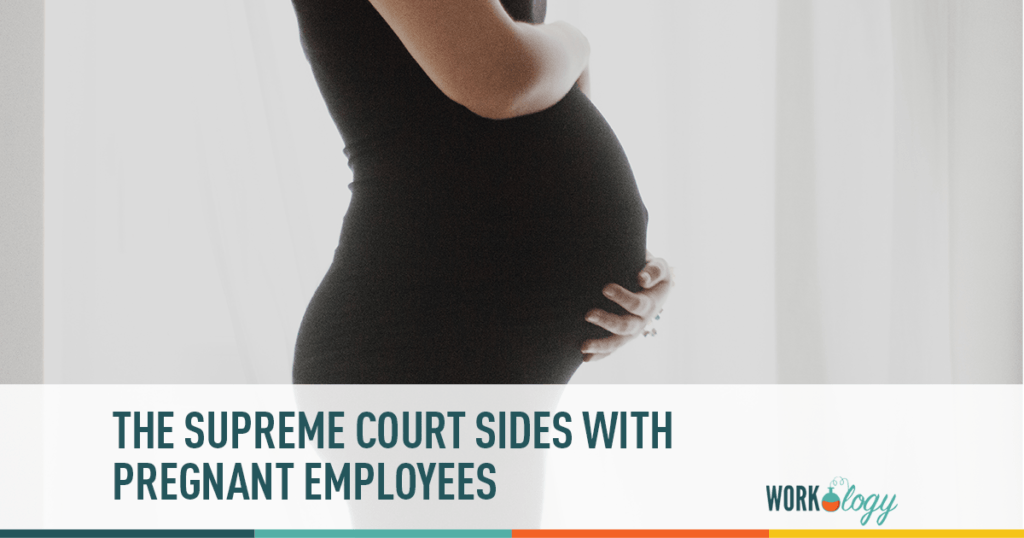Back in December I wrote about the Supreme Court hearing arguments in Young v. United Parcel Service. The case caught everyone’s attention due to its far-reaching consequences, and for me because I had a new baby due in January (who decided to come three weeks early right before Christmas). For those of you who don’t recall, here are the facts:
Peggy Young found out she was pregnant in 2006 while working as a driver for UPS, primarily delivering overnight letters. Young requested a different assignment even though she wasn’t usually forced to handle hefty parcels because of her doctor’s restrictions, which allowed her to lift only 20 pounds. The UPS driver role required her to be able to lift 70 pounds, so her superiors at the company informed her that she would need to take an unpaid medical vacation. When Title VII of the Civil Rights Act was revised to prevent discrimination against employees based on pregnancy or a condition related to it, Young sued, alleging a violation of the Pregnancy Discrimination Act.
Young contended before the Supreme Court that she was not treated the same as other similarly situated, non-pregnant employees. She specifically complained that other UPS drivers who lost their licenses or were hurt in non-work-related accidents received light duty employment whereas she did not. UPS, though, countered that company did not treat employees in similar situations any differently.
I advised you to make sure to assign light-duty tasks to pregnant staff in December. And I predicted that Young would win at the Supreme Court. It turns out I ought to have purchased a few lottery tickets for myself that day.
The Court’s Decision
The Court returned the case to the Fourth Circuit Court of Appeals in a 6-3 vote. Instead of immediately ruling in Young’s favor, the Court decided that Young had the right to bring a lawsuit against UPS for neglecting to offer a light-duty option because of her pregnancy. However, the judgment has a much wider impact than only Young.
Employers are now required to give adjustments to pregnant workers if they have done so in the past for other employees with a similar set of restrictions. According to some, the Young judgment lowers the threshold for a pregnant employee to file a claim alleging pregnancy discrimination. I don’t necessarily believe this will result in more pregnant discrimination claims since, regardless of Supreme Court precedent, if someone feels they have been discriminated against, they will file a lawsuit. However, because of the lower standard, the EEOC is more likely to penalize businesses for their actions, which might lead to more cases progressing through the preliminary stages (or settling for larger amounts).
Just like any other situation where an employee is seeking different treatment for a physical issue, you need to stop and think before you make a decision. And if you’re still not sure, calling your lawyer should be your next step because if you handle this incorrectly you’ll be calling them anyway.







